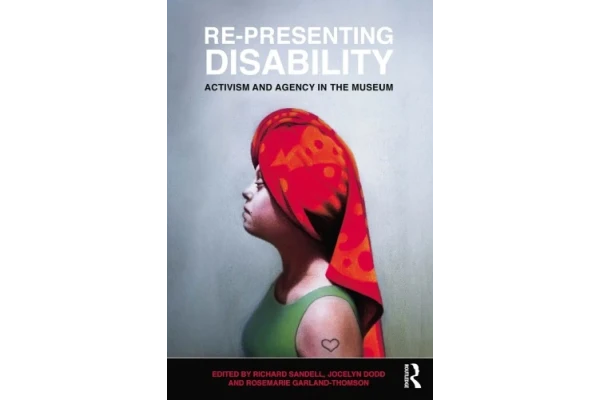
Re-Presenting Disability addresses issues surrounding disability representation in museums and galleries, a topic which is receiving much academic attention and is becoming an increasingly pressing issue for practitioners working in wide-ranging museums and related cultural organisations. This volume of provocative and timely contributions, brings together twenty researchers, practitioners and academics from different disciplinary, institutional and cultural contexts to explore issues surrounding the cultural representation of disabled people and, more particularly, the inclusion (as well as the marked absence) of disability-related narratives in museum and gallery displays. The diverse perspectives featured in the book offer fresh ways of interrogating and understanding contemporary representational practices as well as illuminating existing, related debates concerning identity politics, social agency and organisational purposes and responsibilities, which have considerable currency within museums and museum studies. Re-Presenting Disability explores such issues as: In what ways have disabled people and disability-related topics historically been represented in the collections and displays of museums and galleries? How can newly emerging representational forms and practices be viewed in relation to these historical approaches? How do emerging trends in museum practice – designed to counter prejudiced, stereotypical representations of disabled people – relate to broader developments in disability rights, debates in disability studies, as well as shifting interpretive practices in public history and mass media? What approaches can be deployed to mine and interrogate existing collections in order to investigate histories of disability and disabled people and to identify material evidence that might be marshalled to play a part in countering prejudice? What are the implications of these developments for contemporary collecting? How might such purposive displays be crea
PERSIAN
ارائه مجدد معلولیت به مسائل مربوط به بازنمایی معلولان در موزهها و گالریها میپردازد، موضوعی که توجه آکادمیک زیادی را به خود معطوف میکند و برای پزشکان شاغل در موزههای وسیع و سازمانهای فرهنگی مرتبط به موضوعی فزاینده تبدیل میشود. این حجم از مشارکتهای تحریکآمیز و بهموقع، بیست محقق، شاغل و دانشگاهیان را از زمینههای مختلف رشتهای، نهادی و فرهنگی گرد هم میآورد تا مسائل پیرامون بازنمایی فرهنگی افراد ناتوان و بهویژه شامل (و همچنین غیبت آشکار) روایتهای مربوط به معلولیت در نمایشگاههای موزه و گالری دیدگاههای متنوعی که در کتاب ارائه میشود راههای تازهای برای بازجویی و درک شیوههای بازنمایی معاصر و همچنین روشن کردن بحثهای مرتبط موجود در مورد سیاستهای هویتی، عاملیت اجتماعی و اهداف و مسئولیتهای سازمانی را ارائه میدهد که در موزهها و مطالعات موزهها ارزش قابل توجهی دارد. «ارائه مجدد معلولیت» به بررسی موضوعاتی از این قبیل میپردازد: به چه روشهایی افراد معلول و موضوعات مرتبط با معلولیت در طول تاریخ در مجموعهها و نمایشگاههای موزهها و گالریها نشان داده شدهاند؟ چگونه می توان اشکال و شیوه های بازنمودی نوظهور را در رابطه با این رویکردهای تاریخی نگریست؟ روندهای نوظهور در عملکرد موزه - که برای مقابله با بازنمایی های تعصب آمیز و کلیشه ای افراد معلول طراحی شده اند - با پیشرفت های گسترده تر در حقوق معلولان، بحث ها در مطالعات مربوط به معلولیت، و همچنین تغییر شیوه های تفسیری در تاریخ عمومی و رسانه های جمعی ارتباط دارد؟ چه رویکردهایی را می توان برای استخراج معادن و بازجویی از مجموعه های موجود به منظور بررسی تاریخچه معلولان و افراد ناتوان و شناسایی شواهد مادی که ممکن است برای ایفای نقش در مقابله با تعصب جمع آوری شود، به کار برد؟ پیامدهای این تحولات برای مجموعه معاصر چیست؟ چگونه ممکن است چنین نمایشگرهای هدفمندی ایجاد شوند؟
دیدگاه خود را ثبت کنید